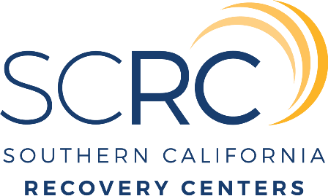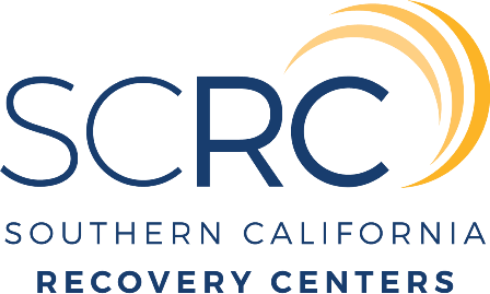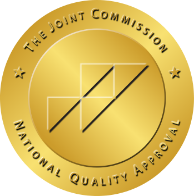If you’re trying to determine whether you may be experiencing PTSD, a PTSD self test might seem like a starting point. It’s important to recognize that self-tests are not diagnostic tools, but they can help you identify symptoms that may be related to PTSD. This article provides a rundown of self-assessment tools, essential symptom information, and a reminder that professional evaluation is the definitive step for answering concerns about PTSD.
Again, please keep in mind:
- PTSD self-assessment tools like the PCL-5 can help identify symptoms, but cannot replace professional diagnosis; self-tests may point to the need for a full evaluation by a mental health specialist.
- A combination of psychotherapy, medication, and support systems are effective treatment options for PTSD, which should be tailored to the individual’s needs and symptoms.
- Awareness and understanding of PTSD are crucial for recognizing the need for professional help, as misconceptions can hinder treatment seeking and management of the condition.
Understanding PTSD and Self-Assessment
Post-Traumatic Stress Disorder (PTSD) manifests in individuals who have witnessed or been through a traumatic event, and it is crucial to understand that this mental health condition is a natural reaction to extraordinary situations. It’s not indicative of frailty. For those exposed to such events, initiating an early self-assessment for PTSD can be instrumental in recognizing the signs and symptoms associated with this stress disorder. Using validated instruments like PCL-5 or IES-R contributes significantly towards assessing one’s own mental state and discerning when professional consultation might be required due to potential mental disorders including PTSD.
There are various tools at hand for conducting self-evaluations of post-traumatic stress symptoms, spanning interviews and questionnaires designed for personal use. These methods provide different angles from which individuals may scrutinize their own experiences. They should act merely as precursors to expert assessment by healthcare practitioners for verifying diagnosis and shaping suitable treatment courses. The PCL-5 checklist dedicatedly points people toward comprehensive evaluations if responses indicate possible underlying issues related to trauma.
It must be emphasized that accurate identification of Post Traumatic Stress Disorder cannot hinge solely on an individual’s assessment. Only certified mental health professionals are equipped with the necessary expertise for making formal diagnoses based on thorough analysis. Seeking out specialists’ input ensures correct recognition of any existing psychiatric conditions triggered by traumatic incidents, including but not restricted exclusively to instances categorized under PTSD itself.
What Triggers PTSD?
Experiencing a traumatic event can lead to the onset of PTSD, with potential triggers ranging from violent crimes and natural disasters to learning about trauma inflicted on loved ones. It’s important to recognize that not everyone who goes through similar traumatic events will experience PTSD since personal responses to trauma differ greatly. Effectively managing this condition requires pinpointing unique triggers for each individual suffering from PTSD.
Certain environmental cues such as specific visuals, sounds or locations might evoke intense symptoms of PTSD because these cues are strongly associated in the brain with the original trauma. These triggers have the power to provoke extreme anxiety or physical reactions because they often involve sensory experiences that vividly remind an individual of their past traumas—whether these experiences are conspicuously direct or insidiously subtle reminders of their initial encounter with distress.
Recognizing PTSD Symptoms
A range of symptoms can indicate PTSD, such as:
- Repeatedly reliving the traumatic event through distressing flashbacks and terrifying nightmares
- Engaging in avoidance behaviors to evade trauma reminders
- Encountering persistent negative feelings and thoughts
- Suffering from heightened arousal
The emergence of PTSD symptoms can occur at any point after experiencing a trauma, with their severity ebbing and flowing over time. They are also known to return periodically, which makes self-evaluation more challenging.
Many people diagnosed with PTSD experience an altered perception of themselves, feeling estranged or under the impression that they have become a worse version of themselves—effects often linked to their experiences. Biological influences may play a role in the manifestation of certain PTSD symptoms like emotional numbness or hyperarousal—including irregular levels of stress hormones and alterations within brain regions responsible for emotions and memory, such as the hippocampus.
Self-Testing for PTSD

A self-assessment for PTSD is useful as an initial measure to identify potential symptoms of the condition. It cannot offer a conclusive diagnosis. Yet recognizing symptoms through this preliminary screening can be significant in prompting one to consult with a mental health professional for more detailed advice.
If individuals score elevated levels on instruments like the Dissociative Experiences Scale or PCL-5, which measures various PTSD symptom clusters, it signifies that evaluation by a trained expert may be necessary. While these assessments are not substitutes for an official professional diagnosis of PTSD, they serve as valuable indicators that could lead someone experiencing PTSD symptoms towards getting proper help and support.
Identifying Your Symptoms
An online self-assessment for PTSD typically evaluates several symptoms, such as:
- Experiencing flashbacks
- Having recurring dreams related to the trauma
- Persistent upsetting thoughts or emotions
- Irritability and anger outbursts
- Being easily startled or jumpy
- Constantly feeling on edge
- Trouble concentrating
- Altered sleeping habits
These assessments examine issues that individuals may experience following traumatic events, with attention paid to how often and intensely these problems manifest within the past month.
The process of self-evaluation largely depends on recognizing symptoms. It’s essential for gaining insight into one’s mental health condition by identifying both emotional and physical responses to certain triggers. Nevertheless, it should be noted that these evaluations do not replace a professional diagnosis. They are merely tools designed for better understanding of mental health conditions.
Reflecting on Trauma and Stressors
Undergoing a traumatic event doesn’t necessarily lead to PTSD. It is advised for individuals to contemplate their past and present traumatic events as this may shed light on how such experiences are impacting their current mental health, including emotions, thoughts, and actions.
Having resilience factors at one’s disposal—for instance proficient coping mechanisms and strong support systems from family or friends—can diminish the likelihood of succumbing to PTSD after enduring trauma. Recognizing the repercussions of these traumatic incidents enables people to more accurately pinpoint any symptoms they’re experiencing and take active steps towards controlling their trauma-related issues.
Understanding Your Results
Taking an online self-test for PTSD can provide valuable information about one’s mental health, yet it should not be mistaken as a definitive diagnosis. Instead, the outcomes from such tests should serve as a catalyst for seeking out consultation with a qualified mental health professional who can offer an authoritative diagnosis. The PCL-5 scoring system is employed in assessing PTSD. This tool includes items that are evaluated on a 0 to 4 scale, which culminates in aggregate scores spanning from 0 to 80. A proficient understanding of the results relies on familiarity with DSM-5 symptom clusters related to re-experiencing events, avoidance behaviors, mood changes and hyperarousal—all critical components aligned with the structure of this particular assessment.
Indicative cutoff points within the range of 31 to 33 on the PCL-5 may point toward likely PTSD—a metric subject to fluctuate somewhat depending upon specific group characteristics under evaluation. Alterations between five and ten points signal substantial shifts during treatment monitoring. Notwithstanding these indicators, interpreting such findings properly warrants scrutiny by specialized personnel so they may validate any presumptive diagnoses while simultaneously exploring potential avenues for therapeutic interventions.
Below is a sample PTSD online self-assessment quiz. Remember, an online quiz does not replace the assessment of a qualified mental health professional.
PTSD Self Test: Take The Quiz

The Role of Professional Evaluation in Diagnosing PTSD
Mental health experts use the DSM-5 guidelines to identify post-traumatic stress disorder (PTSD), which stipulates that an individual must have been exposed to trauma. The symptoms they look for include:
- Recurrent experiences of the traumatic event, such as nightmares and flashbacks
- Intentionally avoiding things related to the trauma
- Negative changes in thought processes and mood states
- Increased arousal and reactivity levels
For a thorough evaluation of PTSD, professionals employ tools like the Clinician Administered PTSD Scale (CAPS), PTSD Checklist (PCL), Post Traumatic Stress Diagnostic Scale (PDS), and Davidson Trauma Scale (DTS). These assessments are designed to determine how often and how severely one experiences symptoms associated with PTSD.
Diagnosing PTSD is complex, requiring psychiatrists, psychologists or clinical social workers to rule out other causes such as medication effects or substance abuse problems when assessing if someone’s life has been significantly disrupted by their symptoms. The PCL-5 is a self-assessment form that people can use themselves. It lists 20 DSM-defined signs of ptsd aiding individuals in tracking symptom progression over time. It’s used both for initial screening purposes and preliminary diagnosis confirmation regarding PTS.
Beyond the Self-Test: Next Steps
Following a positive result on a self-administered PTSD test, it is critical to engage with a mental health professional for an in-depth evaluation to confirm the diagnosis of PTSD. This thorough assessment may involve structured interviews or answering detailed questions through self-report questionnaires related to traumatic events and subsequent difficulties faced.
It’s important for individuals to be informed about what the assessment process entails, including how long it might take, how results will be used, and the level of expertise that the mental health provider has regarding PTSD before beginning. Individuals maintain control over how much personal history they share during these sessions and have the flexibility to pause whenever necessary.
For successful treatment of PTSD, patients must commit to following their prescribed treatment plan and maintaining open lines of communication with their designated mental health professional.
Treatment Options for Post- Traumatic Stress Disorder

A multitude of treatment options exist for addressing PTSD, encompassing psychotherapy, medicinal approaches, and comprehensive holistic healing practices. Customizing the approach to treat both the underlying trauma and its associated symptoms specifically tailored to those undergoing persistent traumatic experiences can significantly improve the outcome.
As a medical condition deeply rooted in profound emotional responses and neurobiological alterations due to trauma, conquering PTSD typically requires more than sheer determination. Providers such as Dawn Health deliver reachable services for treating PTSD that are compatible with multiple insurance carriers like Blue Cross Blue Shield, Aetna, Cigna, and United Healthcare.
Psychotherapy Interventions
Therapies that focus on trauma, such as cognitive-behavioral therapy (CBT) and eye movement desensitization and reprocessing (EMDR), are recognized as primary treatments for a person suffering from PTSD. Another effective form of PTSD treatment is written exposure therapy, which is not only succinct but also does not require assignments to be completed outside of the session time. Conducting therapies such as prolonged exposure through home-based telemedicine has been shown to be just as beneficial as traditional face-to-face sessions, thereby enhancing accessibility to treatment.
Within the framework of cognitive behavior therapy lies cognitive restructuring. This aspect aids patients in identifying troubling thoughts and behaviors with the aim of modifying them. In contrast, psychoeducation serves an important role within cognitive processing therapy while direct confrontations with triggers—known as in vivo exposures—are fundamental components utilized by prolonged exposure therapy.
Medication and Its Role
Certain medications, including selective serotonin reuptake inhibitors (SSRIs), have garnered approval from the U.S. Food and Drug Administration for PTSD treatment due to their proven effectiveness. SSRIs such as sertraline (Zoloft) and paroxetine (Paxil) are known to alleviate a range of PTSD-related symptoms like depression, anxiety, sleep disturbances, and problems with concentration.
For those grappling with intense anxiety disorder and its accompanying issues, doctors might prescribe anti-anxiety drugs. These are typically prescribed for short durations because of their potential for dependency. The drug Prazosin (Minipress), despite generating inconsistent outcomes in recent research efforts, is still being investigated for its ability to diminish or eliminate nightmares among individuals suffering from PTSD.
Tailoring medication regimens or doses may be necessary to effectively address a person’s unique symptomatology and situation—positive changes can often start manifesting within a few weeks’ time.
Support Systems and Coping Strategies

Support from family and friends can be an essential part of recovery for individuals with PTSD. Staying connected with supportive and caring people, such as family and friends, can provide healing and comfort. Participating in support groups can offer a sense of community and shared experience that helps individuals with PTSD feel less isolated and more understood.
Coping mechanisms that can help manage the symptoms triggered by PTSD include:
- Deep breathing
- Expressive writing
- Exercise
- Meditation
Engaging in self-care activities such as mindfulness, exercise, and maintaining a healthy lifestyle can help individuals manage PTSD symptoms and improve overall well-being.
Risk Factors and Vulnerable Populations

Approximately 6.8% of the American population is affected by PTSD, with a higher incidence in women compared to men. Those who have experienced depression or anxiety previously are at an elevated risk for developing PTSD following a traumatic event. The absence of family or social support can increase the likelihood of someone succumbing to PTSD. Genetic predispositions like having a family history of mental health issues can increase one’s susceptibility to PTSD.
When addressing ptsd treatment, it may be necessary to tailor strategies if comorbid conditions such as substance use disorder or personality disorders coexist alongside ptsd.
The Impact of Childhood Trauma
Individuals exposed to Adverse Childhood Experiences (ACEs) such as neglect and abuse before the age of 18 have a significantly elevated risk of developing PTSD later in life. Those with ACEs face a 30% likelihood of experiencing PTSD during their lifetime, whereas individuals without these experiences encounter only a 20% chance. The severity and timing of childhood trauma are crucial factors that can intensify symptoms if additional trauma is experienced in adulthood.
Trauma occurring early in life may disrupt the formation of the default mode network (DMN), which plays an essential role in self-reflection and social cognition. This disruption suggests potential long-lasting impacts on an individual’s sense-of-self, along with increasing other risks for future instances of PTSD.
Children who suffer from recurrent episodes of trauma stand at increased odds for exhibiting complex PTSD characteristics, encompassing:
- Symptoms associated with dissociation
- Somatization processes
- A wide range or comorbidity
- Increased levels or thoughts related to suicide
- Disturbances pertaining to identity as well as difficulties within interpersonal relationships
The LGBTQ+ Community and PTSD
Members of the LGBTQ+ community face a disproportionately high incidence of trauma, including instances of violence and victimization, when compared to their non-LGBTQ+ counterparts. This contributes to a greater projected occurrence of PTSD among these individuals. The impact is Intensified by minority stress—stemming from systemic oppression, prejudice in various forms, and subtle denigrations—which not only aggravates symptoms associated with PTSD but also has the potential to induce PTSD-like conditions even without exposure to a traumatic event that meets criterion A.
The enduring presence of anti-LGBTQ attitudes can make it more challenging for those affected by trauma within this demographic to navigate through recovery processes successfully. Consequently, such environments may hinder the efficacy of treatments designed for addressing PTSD. To overcome these barriers during treatment processes for LGBTQ+ people who are at higher risk for encountering discrimination within healthcare systems requires exceptionally effective communication between patients and providers.
In order to optimally serve LGBTQ+ persons afflicted with PTSD, thoughtful modifications might be necessary in therapeutic strategies aimed at treating them. Adaptations would take into account issues related specifically tailored towards combatting experiences discriminatory experiences while promoting care that respects their identities fully.
Common Misconceptions About PTSD
It’s crucial to understand that traumatic events leading to PTSD encompass a broad array of experiences, not limited to warfare. These can involve enduring physical or sexual assault, being in an accident, or surviving natural disasters. Recognizing the need for professional help is vital when addressing PTSD and its implications, as it fosters improved coping mechanisms for individuals who have suffered from these traumas—including those who have undergone sexual assault—and their loved ones.
Contrary to some beliefs, experiencing PTSD isn’t exclusive to veterans. Rather it’s something anyone subjected to severe trauma might endure. Overcoming this condition goes beyond sheer determination and necessitates expert intervention for effective management and treatment.
When to Seek Help: Recognizing the Signs
If an individual continues to experience PTSD symptoms that disrupt daily life for more than a month and have significant impact, it is crucial to seek professional guidance. The timeline for recovery from PTSD can vary considerably. While some may overcome their symptoms in six months, others might find themselves coping with them years after the event, underscoring the necessity of expert intervention.
Should an individual face considerable distress due to PTSD—evident through sleep disturbances and concentration issues—it’s advisable to consult with a healthcare provider. Professional help becomes particularly important if cognitive and mood-related symptoms like enduring negative emotions or difficulty experiencing positive emotions intensify following a traumatic incident.
In instances where there’s no discernible improvement in PTSD symptoms over 6-8 weeks despite adhering to prescribed treatment strategies, enlisting the aid of a healthcare professional is essential.
Navigating Health Insurance and Mental Health Care
Before beginning therapy, ascertain your insurance coverage by contacting their customer service or reviewing the in-network mental health providers listed on the company’s website. All Marketplace plans, mandated by the Affordable Care Act, are required to cover vital services for mental health and substance abuse such as behavioral health treatment, hospitalization services, and treatments for substance use disorders while also refraining from denying benefits or charging more due to pre-existing conditions.
Marketplace insurance policies must provide parity protections that prevent them from placing monetary caps on essential benefits. This ensures equitable coverage for both mental health and substance abuse issues comparable to that of medical/surgical care. For those whose insurance does not include therapy costs or individuals without any form of insurance at all, alternatives like therapists with sliding-scale fee systems exist along with opportunities for low-cost or complimentary therapy sessions provided through community-based mental wellness centers.
When selecting a suitable therapist, be certain they:
- possess valid licensure,
- have appropriate experience tailored towards your specific therapeutic needs which can be confirmed via state licensing authorities,
- if considering out-of-network options ensure you understand how reimbursement will work according to your insurance plan specifics.
PTSD is a multifaceted disorder that necessitates comprehension, self-evaluation, and expert intervention for effective control. It’s essential to recognize that PTSD can affect anyone and is not an indication of frailty. It is instead a natural reaction to extraordinary events. Numerous treatment options exist such as counseling, pharmacotherapy, and support networks. Importantly, when symptoms continue or interfere with everyday activities, it’s imperative to seek professional assistance for treatment.
You don’t have to do this alone. Reach out to our team today to learn how we can support you in getting a professional assessment for PTSD, and further treatment options.
Southern California Recovery Centers
Southern California’s Premier Outpatient Addiction Recovery Center
Frequently Asked Questions
For self-evaluation of PTSD, the PCL-5 stands as the preferred tool. It serves an essential role in various environments, including clinical and research spheres, where it helps to identify PTSD presence, gauge the intensity of symptoms, and track changes throughout therapy.
Scores on the PCL-5 can vary between 0 to 80. With escalating scores reflecting more severe manifestations of PTSD symptoms.
Indeed, with PTSD, the mechanism of survival mode may remain persistently activated, causing an ongoing state of fight or flight. This results in the affected person consistently generating elevated levels of hormones associated with this response despite the absence of any immediate threat.
Should you be suffering from intense anxiety, persistent nightmares, recurring flashbacks, incessant thoughts of a traumatic event, emotional volatility that’s hard to manage and feelings such as guilt or irritability? These could potentially signal the presence of PTSD.
To ensure your well-being is prioritized and to enhance your quality of life, it’s crucial to consult with healthcare professionals who can provide an accurate diagnosis and recommend appropriate treatment options for PTSD.
Symptoms of PTSD encompass experiencing flashbacks to the traumatic event, deliberately steering clear of triggers, grappling with persistent negative thoughts and emotions, a heightened state of alertness or agitation, intense emotional reactions, along with a sense of detachment from oneself or people around you. (Date not required).
It is crucial not to attempt self-diagnosing PTSD. Instead, one should obtain a comprehensive evaluation from a qualified mental health professional to ensure an accurate diagnosis.



